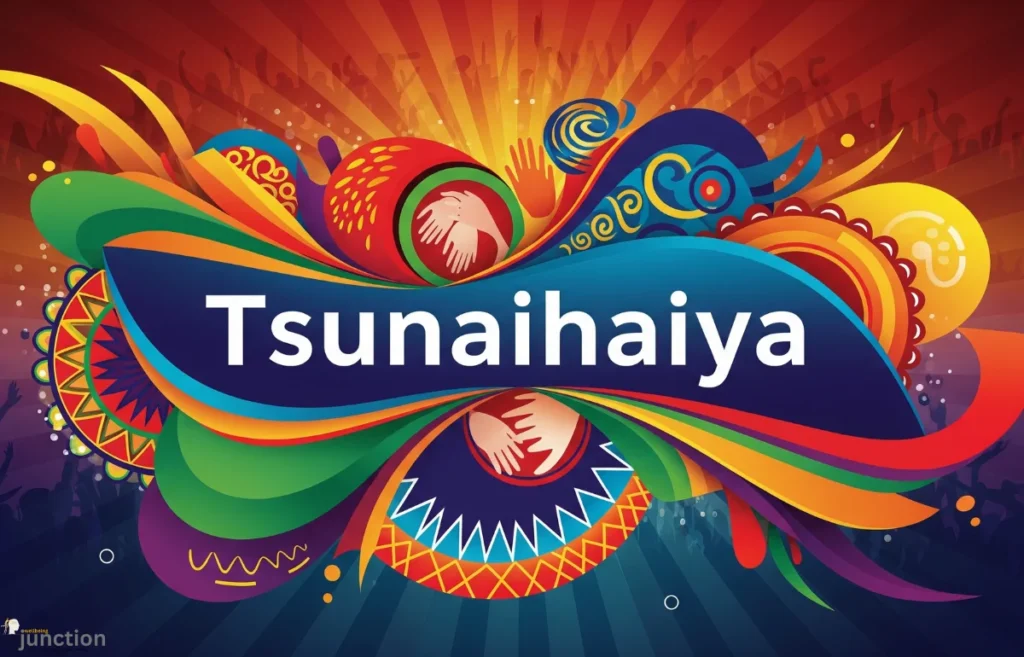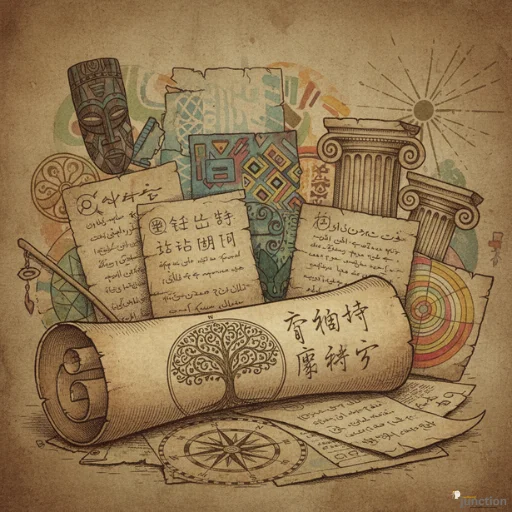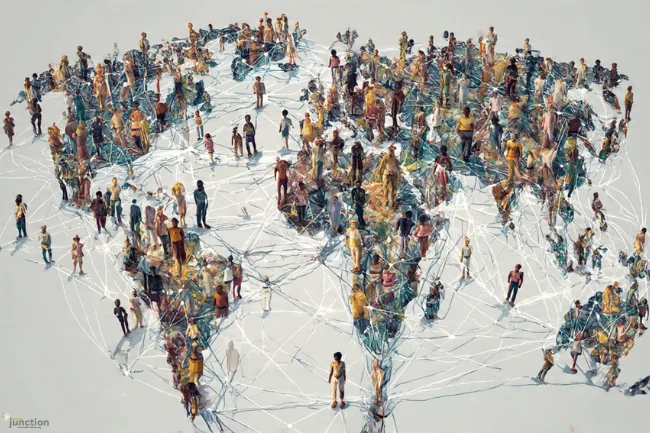Have you ever encountered a word that feels ancient yet entirely relevant to the modern world—a single term that seems to hold the weight of history, identity, and shared human experience? That word is often Tsunaihaiya.
Far from being a simple, one-dimensional term found in a standard dictionary, Tsunaihaiya is a fascinating linguistic and cultural concept. It is not limited by geography or a single language but acts as a powerful, universal symbolic expression that perfectly encapsulates heritage, identity, and emotional resonance. In today’s interconnected, fast-paced world, understanding this concept offers a bridge to greater personal depth and global connection. We’re going to explore the compelling history, the flexible meaning, and the enduring relevance of this incredible word.
What Exactly is Tsunaihaiya? Defining the Universal Expression
At its very core, Tsunaihaiya functions less as a noun describing a concrete object and more as a vessel for complex human feelings and cultural understanding. When scholars and enthusiasts discuss it, they are often defining a concept of human experience that resists rigid classification.
A Fusion of Identity and Emotional Resonance
The power of Tsunaihaiya lies in its ability to resonate on a personal, deeply emotional level while simultaneously representing a collective, shared identity.1 Think of it as the feeling you get when you listen to a traditional song from your ancestry—it’s familiar, meaningful, and deeply connected to who you are, yet it speaks a universal language of humanity. This ability to be both personal and collective is why the word is considered a universal expression of profound emotional value.
For many, it is a term that signifies an internal, quiet strength. For others, it’s a celebration of their roots, a direct line back to their heritage and ancestral wisdom. The interpretation is deliberately flexible, allowing the word to adapt to the speaker’s or writer’s immediate context.
Tracing the Roots: The Blended Origin of Tsunaihaiya
Unlike words with clear-cut etymologies and documented birthplaces, the historical roots of Tsunaihaiya are not tied to one source. Instead, its origin is a rich and intricate blend of folklore, mythology, and oral traditions that have evolved over centuries.
Echoes in Ancient Folklore and Oral Traditions
Experts suggest that the concept of Tsunaihaiya likely emerged in different global cultures independently, almost simultaneously. Its presence in various ancient narratives points towards a shared human need to articulate the inarticulable: the feeling of deep connection.
- Mythology: In some cultural studies, the term’s sound is linked to the rhythmic chants used in creation myths, symbolizing the harmony required to bring order from chaos.
- Folklore: In many folktales, it appears as a hidden message or secret word known only to those seeking truth or spiritual balance, passed down through oral traditions.
The lack of a single, verifiable origin story doesn’t weaken the word; rather, it solidifies its status as a timeless concept—a feeling that transcends the need for formal documentation.
The Timeless Adaptability of the Word
What keeps Tsunaihaiya relevant is its incredible adaptability. It has survived, and indeed thrived, over centuries because its core meaning can shift without breaking. A concept born in ancient storytelling is just as easily applied to a modern corporate branding campaign or a personal journaling practice. This constant evolution ensures that the word remains a vital part of the global dialogue.
Interpreting Tsunaihaiya: A Spectrum of Meaning
The flexible nature of Tsunaihaiya allows it to represent a beautiful spectrum of ideas. It is a chameleon of meaning, perfectly capturing the nuanced needs of the human spirit.
| Aspect of Life | Interpretation of Tsunaihaiya | Contextual Example |
| Personal | Inner Strength and Resilience | A personal mantra for overcoming a significant life challenge. |
| Spiritual | Peace and Harmony | A state of internal balance achieved through reflection. |
| Social | Unity and Togetherness | Used in speeches to encourage community solidarity. |
| Creative | Artistic Creativity | The driving force or inspiration behind a new work of art or music. |
| Cultural | Heritage and Identity | A representation of one’s cultural legacy and roots. |
From Inner Strength to Artistic Creativity
At the individual level, Tsunaihaiya is often interpreted as inner strength or resilience—the unwavering spirit that allows one to persist through hardship. When applied to the arts, it transforms into pure artistic creativity. Writers use it as a metaphor for a spiritual journey, musicians weave its rhythmic quality into melodies that evoke harmony, and visual artists employ it to symbolize balance. It is, in essence, the spark that ignites inspired expression.
Tsunaihaiya as a Cultural Motif in Modern Art
The word’s ability to be a blank slate for inspiration has made it a powerful cultural symbol in contemporary media. Its use in independent films, poetry slams, and abstract visual arts showcases its power to convey profound meaning with quiet simplicity.
The Cultural Resonance of Tsunaihaiya
The true measure of Tsunaihaiya’s impact is its profound cultural resonance. It has moved beyond a philosophical idea to become an active ingredient in how communities define themselves and how individuals navigate their lives.
Tsunaihaiya as a Guiding Principle for Personal Growth
For many life coaches, mentors, and individuals on a journey of self-discovery, Tsunaihaiya is adopted as a guiding principle. It serves as a personal mantra, encouraging an individual to embrace change and progress while simultaneously remaining grounded in their authentic self and respecting their ancestry. The word symbolizes the positive transformation that comes from balancing the past with the future.
Tsunaihaiya in the Modern Dialogue: Global Identity and Diversity
In the modern world, dominated by digital connectivity, Tsunaihaiya has become a rallying cry for global identity and diversity. Its inherent inclusivity—the fact that it belongs to no single nation—makes it the perfect symbol for a diverse, interconnected planet.
When leaders or thinkers use the term, they invoke a sense of shared humanity and collective unity that transcends political and geographical boundaries. Its non-denominational nature allows it to be used authentically across social movements, online communities, and international forums seeking to promote peace and understanding. The essence of Tsunaihaiya is a reminder that, beneath our cultural differences, we all share a common human experience.
Conclusion: Embracing the Meaning
The journey through the meaning of Tsunaihaiya is a journey into the deepest parts of human consciousness. From its roots in ancient folklore to its role as a modern symbol of global unity, the word continues to inspire emotional resonance and connection. It’s a powerful reminder that some of the most profound ideas are those that are the least constrained by formal definition.
Consider this word a personal challenge: What does Tsunaihaiya mean to you? Take a moment to reflect on your own heritage, identity, and personal resilience. By giving the word your own meaning, you keep this incredible universal expression alive and relevant for the next generation.
FAQs
Q1: Is Tsunaihaiya a real word from a specific language?
Tsunaihaiya is best described as a conceptual, cultural term rather than a formal word from a single, verifiable language. Its origins are a blend of ancient folklore and oral traditions, suggesting it evolved organically across different cultures to express complex, shared human feelings like unity and identity.
Q2: How can I use Tsunaihaiya in my daily life?
Many people use Tsunaihaiya as a personal mantra or a guiding principle. You can use it as a silent reminder of your inner strength during challenges, a symbol to connect with your heritage, or a catalyst for artistic creativity in your work or hobbies.
Q3: Why is Tsunaihaiya described as a “universal symbolic expression”?
It is called a “universal symbolic expression” because its core themes—identity, resilience, unity, and emotional resonance—are understood and valued across all cultures and geographic boundaries. Its meaning is flexible, allowing it to adapt to any context where a deep human connection is discussed.
Q4: Is Tsunaihaiya an older or newer concept?
The core concepts represented by Tsunaihaiya are ancient, rooted in folklore and mythology passed down over centuries.2 While the exact term itself may have seen a resurgence in modern cultural discussions, its meaning is timeless and has been evolving throughout history.
Q5: Is Tsunaihaiya related to any specific religious or philosophical movement?
No, Tsunaihaiya is not tied to any single religious doctrine or formal philosophical school. Its appeal is its non-sectarian nature, making it a secular symbol of peace, identity, and global unity that resonates universally, regardless of spiritual or philosophical background.

Ton Roobprom is an experienced writer focused on practical advice across technology, business, travel, beauty, lifestyle, and home improvements. He specializes in distilling complex subjects into clear, actionable insights to help you enhance your daily life.




